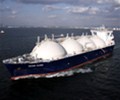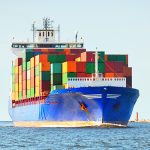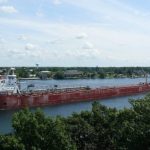The bunker industry is set to undergo de-commoditization as it transitions toward a cost-plus model, fundamentally altering market relationships and putting more focus on cleaner energy solutions than ever before as the shipping industry adapts to a multi-fuel future, an industry consultant said.
Shipowners will seek different fuels for different ships and different routes, with ships being designed and built more specifically to cater to the routes on which they can find that fuel, BLUE Insight director Adrian Tolson told S&P Global Commodity Insights in an interview.
This was already happening with LNG dual-fueled carriers but will become more commonplace in future with, for example, green methanol bunker supply operations supported by demand just like LNG bunker operations, he said.
“LNG supply is usually done on a five- to 10-year term contract, which is almost inconceivable in the minds of a bunker person. That’s going to be the model for all the alternatives moving forward,” Tolson said.
“There will be an underlying commodity price, and then infrastructure and logistics costs will need to be covered by the full contract price, giving the new alternative fuel supplier and their investors a reasonable return,” he added.
Tolson also noted that LNG as a bunker fuel remains relevant with numerous shipowners fitting LNG dual-fueled engines, particularly containerships and car carriers, with the option to reduce CO2 emissions.
According to Tolson, who believes issues over LNG’s methane slip can be overcome and while recognizing the economic issues of current high prices due to the Russia-Ukraine war, still estimates that LNG could potentially account for 10% of the marine fuel mix by 2030.
“Even with the recent series of black swan events it’s still an achievable target,” he said.
Meanwhile, energy — bunker fuel — which has long been an afterthought for shipping is now no longer that, Tolson said.
“Shipowners have major decisions to make on future vessel newbuild energy choices, and this can only be done with support from a charterer or shipper when this commitment is made. Tramp and spot-chartered ships will tend to become a thing of the past as owners will look for longer-term shipper commitments and contract of affreightments. All this leads to the de-commoditization of shipping. Energy transition is going to fundamentally alter commercial shipping as it is also doing with marine fuel supply,” he said.
Biofuels bunkering potential
“I think we are taking baby steps at the moment [in alternative fuels], we are talking about them and discussing them frequently, but the scale of supply is very small, so far very limited volumes have been delivered,” Tolson said.
Even in the widely publicized area of biofuels supply, for example, “if you’re blending 10% or 20% of biofuels into VLSFO, you’re supplying 90% or 80% of VLSFO. So, it’s really not much in terms of biofuel supply even if we are making headlines.”
While biofuels are widely available and generally blended into fuels and as such do not require much infrastructure change, there are challenges in sourcing enough biofuel for the maritime industry, Tolson said.
“There are many land-based usages for biofuels, and I don’t think there’s enough waste biomaterial [used to make second generation biofuels] that can be directed towards the maritime industry,” he said.
In some instances, biofuel usage as a marine fuel requires governments to open up bio markets — and incentives — to the marine sector as its usage has generally been confined to domestic transportation, he said.
Tolson estimates biofuels bunkering to account for approximately 5% of the marine fuel mix by the end of the decade. “That’s probably the best you can hope for.”
Scrubber installations to continue
The Hi-5 spread collapsed in early 2020 when COVID-19 emerged and in the past few months, has “exploded to $200-$300/mt or more,” Tolson said.
“And if you look at charter rates, it’s just incredible how much money charterers are willing to pay for scrubbers installed ships,” he said.
The spread between Singapore marine fuel 0.5%S cargo and Singapore 380 CST high sulfur fuel oil cargo has averaged $315.64/mt to date in October, up from $271.999/mt in September and $242.30/mt in August, S&P Global Commodity Insights data showed.
Scrubber installations will continue on ships due to a favorable payback period but depend on the ready availability of HSFO in the bigger ports, Tolson said.
Even if HSFO availability tightens, the payback on a newbuild scrubber installation can be less than one year and a ship may last 25 years, he noted.
As some point, a viable technology for scrubbing carbon on board ships may also come along, lending further support to their use, he said.





